Table of contents
Long grain rice ( Oryza sativa ssp. indica) includes narrow rice grains with a length of 6-8 mm. 1 White long grain rice ( organic) is hulled and polished, so it is no longer capable of germinating even when raw. Depending on the variety or type of rice, it has a translucent or cloudy grain.
Using long grain rice in the kitchen:
Long grain rice (white) often has more translucent grains that contain more soluble starch (approx. 20% amylose) than short grain rice, whose grains are cloudier, stick together more and mainly contain amylopectin. The soluble starch in long grain rice makes it cook looser and stick together less. However, the stickiness depends not only on the type of rice, but also on the processing method.
White long grain rice is often used as a side dish without the addition of spices to other dishes, such as vegan curries, stews or soups. Cooked white long grain rice is also often mixed with steamed vegetables such as carrots, peas and zucchini. As fried rice in a pan, steamed long grain rice with mushrooms, red bell peppers and spring onions is quickly prepared. When properly cooled, it is also often mixed with cold ingredients such as dried tomatoes, olives, cucumbers, cherry tomatoes, a little vinegar or lemon juice and served as a rice salad.
Depending on the method of preparation, classic spices such as parsley, chives or chervil are suitable for long-grain rice; Mediterranean-style long-grain rice tastes good with basil, oregano or thyme. Soy sauce and fresh coriander leaves go well with fried fragrant rice in a pan.
White long-grain rice remains loose and somewhat grainy even when cooked. If you leave rice in the pot for too long without letting it steam off and loosen up, every type of rice sticks together and loses its looseness.
The classification of long grain rice is not always clear, often they are trade names and not actual varieties. The following list shows the most well-known types of long grain rice:
Basmati rice : is a long grain rice from the Himalayas with an aromatic scent, which is why it is considered fragrant rice. After cooking, the long grains of basmati rice remain loose - provided you don't leave the rice in the pot for too long. Is basmati rice unhealthy? Basmati rice is available as white rice or as healthier whole grain rice.
Jasmine rice : is also a long grain rice and has a floral scent reminiscent of jasmine and popcorn. In addition to fragrant rice, it is also known as perfume rice, Siam rice or Thai fragrant rice. Jasmine rice is a little smaller than basmati rice and is also a little stickier, which makes it very popular in Thai cuisine. Jasmine rice is also available in polished or whole grain form. Jasmine rice is also available as red jasmine rice or Thai black jasmine rice.
Patna rice: is white (polished) long grain rice from Patna (India). This top long grain rice (also known as Siam Patna rice) is one of the most popular types of rice and can only be called 'Patna' if the grains are longer than 6.4 mm on average. The transparent grains remain firm after cooking and only stick slightly. The rather neutral-tasting rice goes well with sweet and savory dishes.
Sadri rice: is a long grain rice from Iran with slightly shorter but stronger grains, which has a soft core when cooked and has an aromatic to floral scent. There is also smoked Sadri Dudi rice, which gets a typical smoky aroma from smoking over wood.
Long grain rice (white) is often also available parboiled. This is not a variety, but a production process ("partially boiled") in which the raw rice (not raw rice) or paddy rice is soaked, treated with steam and pressure and then dried, peeled and polished. This "pre-cooking" shortens the cooking time, the grains are loose and remain grainy. This rice is less suitable for rice pudding, risotto or sushi.
If you know the structure of rice grains, you know that the fruit shell, the seed shell and the aleurone layer are located under the lemma. When you peel the rice, however, you also remove the germ, which is why white, polished rice is no longer capable of germinating. It is therefore not suitable as a raw food. Only wholegrain rice is suitable for germination; it can be eaten raw after it has been soaked and germinated. Read more about "germinating wholegrain rice" under the ingredient wholegrain rice and brown rice.
Rice is also used to make arrack, a brandy made from rice, more precisely from fermented rice mash (35-70% alcohol by volume). White rice is also used to make rice vinegar, rice milk (rice drink), sake (rice wine) and rice flour. 13
Vegan recipe for white long grain rice in a pan:
Ingredients (for 2 people): 120 g white long grain rice (organic), 400 g broccoli, 1 jar/can of cooked kidney beans (approx. 260 g), 1 onion, 1 piece of ginger (approx. 2 cm), 2 tbsp refined rapeseed oil, 2 tbsp soy sauce, 2 tbsp lemon juice, 2 tbsp sunflower seeds, 2 tsp curry powder, salt andpepper.
Preparation: Put raw white long grain rice into lightly salted water and cook with double the amount of water or according to the instructions on the packet. Meanwhile, cut the washed broccoli florets into pieces, rinse the kidney beans with water and drain, peel and chop the onion and the piece of ginger.
Briefly fry the onion cubes and ginger slices in a pan gently heated with rapeseed oil. Then add the broccoli and kidney beans and deglaze with soy sauce and lemon juice. Cover and simmer for a few minutes. Depending on your personal taste, you can briefly roast the sunflower seeds in a pan without adding oil and set aside. It is healthier to skip this process and use the sunflower seeds without roasting.
Mix the curry powder into the cooked white long grain rice and add it to the pan with the sunflower seeds. Season the vegan rice pan with salt and pepper.
Vegan recipes with long grain rice (white) can be found under the note: " Recipes that have the most of this ingredient ".
| Not only vegans or vegetarians should read this: Vegans often eat unhealthily. Avoidable nutritional errors. |
Shopping - where to buy long grain rice?
Supermarkets and wholesalers such as Coop, Migros, Denner, Volg, Spar, Aldi, Lidl, Rewe, Edeka, Hofer etc. definitely offer white long grain rice. Depending on the size and range, you can find different types of white long grain rice there, such as basmati rice, jasmine rice, Iranian Sadri rice (smoked Sadri Dudi rice), premium long grain rice (Patna rice) or parboiled long grain rice. In addition to raw rice, some supermarkets also sell pre-cooked (steam-cooked) long grain rice with oil and salt for the microwave.
Health food stores, drugstores, organic shops and organic supermarkets (e.g. Alnatura, Denn's Biomarkt) offer not only white long-grain rice (raw) but also long-grain whole grain rice in organic quality (organic).
White long-grain rice loses a large part of its valuable nutrients through peeling, grinding and polishing. In some countries, white rice is therefore enriched with iron, niacin and other vitamins. We recommend that you always read the package insert carefully and, if possible, use natural long-grain whole-grain rice.
Preparing your own long grain rice:
For white long grain rice, methods in a saucepan are ideal, such as the soaking method, where you don't pour off any water and the nutrients dissolved during cooking are retained. Before you begin, you have to weigh the rice when it's dry, e.g. 150 g. Then wash the white long grain rice with plenty of water to remove any excess starch. Bring 300 ml of water to the boil in a pan. Add a little salt if necessary and the washed white long grain rice and stir. Reduce the heat to the lowest setting and cover the pan with a lid. The rice should simmer over a low heat for around 15-20 minutes without stirring. Once the liquid has been absorbed, loosen the rice with a fork and serve. It is important to note that not every type of rice needs the same amount of water; it is best to follow the instructions on the packet when using the soaking method.
With the water method, you cook the rice after washing in plenty of water (about six times the amount) for about 15 minutes without a lid. Then you pour the rice through a sieve, put it back in the pot and let it simmer covered for about another 5 minutes.
There are also options for preparing long grain rice in a rice cooker, in the microwave, or using the steam method (rice steamed in a saucepan). You can find a detailed description of this under the ingredient white short grain rice.
Storage:
Like all types of rice, white long-grain rice should be stored in a dark, cool and, above all, dry place. White long-grain rice is hulled and therefore has a shelf life of around two to three years. Whole-grain rice, on the other hand, has a shelf life of around one year: the silver skin and germ are still present, which makes it easier for it to go rancid.
Do not store white rice (raw) next to odorous foods such as spices, coffee, tea or chocolate, otherwise the rice grains will absorb their odor.
Ingredients - Nutritional values - Calories:
White rice, long grain, has 365 kcal per 100 g raw, which mainly come from carbohydrates (approx. 80%). With 7.1 g protein per 100 g, white long grain rice is almost on par with whole grain rice. Rice is slightly lower in protein than other types of grain ( oats : 17 g, wheat : 10 g). Fat is barely present at 0.66 g/100g. 2
Rice loses a large amount of manganese when it is peeled: the manganese content in raw white long-grain rice is 1.1 mg/100g, while wholegrain rice contains just under 4 mg/100g. The loss during the cooking process should not be underestimated: cooked, long-grain wholegrain rice only has 0.97 mg of manganese per 100g. At 2 mg/100g, raw chickpeas contain high amounts of this trace element, but lose half of it when cooked, and end up with only about 1 mg/100g. 2 Manganese plays an important role in the formation of cartilage tissue, among other things. 3
Although rice has a lower protein content than other types of grain, it still contains valuable amino acids. 100 g of white long-grain rice contains 0.08 g of tryptophan, which covers around 33% of the daily requirement. Cooked lentils contain a similar amount of tryptophan, but here too the loss during cooking is noticeable, as raw lentils contain 0.22 g/100g. The amino acid valine is present at 0.44 g/100g, with soft wheat semolina (raw) containing a similar amount. 100 g of ripe soybeans contain 0.59 g of tryptophan and 2 g of valine. White long-grain rice also contains some of the really essential amino acid threonine (0.26 mg/100g). As an informed vegan, you usually supply your body with enough threonine. 2
Selenium is present on average at 15 µg/100g, which covers 27% of the daily requirement. Corn and rye have similar values. Brazil nuts, for example, can greatly enrich selenium; at 1,917 µg/100g, 1-3 Brazil nuts a day (from Bolivia) are sufficient for the daily requirement. 2 Selenium contributes to the body's antioxidant protection system. 4 Please note: The selenium content generally varies greatly depending on the growing area and soil conditions.
The complete ingredients of long grain rice (white), the coverage of the daily requirement and comparison values with other ingredients can be found in our nutrient tables. In the article Nutrients explained you will get a detailed insight into the topic. CLICK FOR (pictogram) under the ingredient picture.
Health aspects - effects:
White long grain rice is, like all pure rice, gluten-free. We recommend that people with gluten intolerance, gluten sensitivity or celiac disease look for a note for gluten-free foods (e.g. crossed-out ear of corn) when shopping. This is because contamination can occur during processing because the same machines are used for grain processing.
Cooked white rice can help rebuild the intestinal mucosa after colitis or gastrointestinal inflammation due to its easy digestibility and astringent effect. 5
Rice bran, which is rich in fibre and is often considered a waste product from rice processing, can be bought and used in a similar way to wheat bran. Rice bran has an antioxidant effect and can protect against colon cancer if eaten as a preventative measure. 6
A rice soup, which is also proven in traditional Chinese medicine ( TCM) to treat gastrointestinal complaints, kidney weakness and allergies, also helps children with acute diarrhea, according to the World Health Organization. However, the WHO recommends this soup in combination with an oral rehydration solution and zinc therapy. 9
Dangers - Intolerances - Side effects:
Is polished rice unhealthy? White rice (peeled or polished) contains few healthy ingredients, as these have been removed along with the outer layers (husk, aleurone layer and germ). This also means that the fiber content is significantly lower. Long-grain wholegrain rice is clearly preferable to white long-grain rice. 5 White rice has a much higher glycemic index (GI) than wholegrain rice. Therefore, eating white rice leads to a faster rise in blood sugar levels. Frequent consumption of white rice increases the risk of developing type 2 diabetes. This was shown by a study specifically in Asian people. 7 Regular consumption of wholegrain rice, on the other hand, is said to reduce the risk of developing diabetes. 14 Read more about diabetes in our article " Plant-based diet can prevent or cure type 2 diabetes ".
The groundwater in some rice-growing regions is heavily contaminated with arsenic and cadmium due to the use of fertilizers and pesticides. The rice plant absorbs these toxins with the water and accumulates them. Since 2015, there has been an EU regulation that sets maximum levels of arsenic in rice and rice products. 15 High levels can also be found in some products such as rice flakes and rice cakes. Young children absorb arsenic even more easily than adults, which is why it is recommended that children under 3 years of age are not fed primarily rice and rice products. 18,19 The maximum level of inorganic arsenic in rice used for the industrial production of infant and toddler food has been less than 0.1 mg/kg since 2015. 8
Folk medicine - naturopathy:
During a fasting cure, an unsalted rice soup is said to detoxify and drain.
Occurrence - Origin - Ecology:
The origin of the rice plant is not clearly understood. In Southeast Asia, remains of collected wild rice ( Oryza rufipogon), the ancestor of the cultivated rice we know today ( Oryza sativa), were discovered. Oryza species were found in three different domestication centers: South America, Asia and Africa. 10 How long has rice existed? People have probably been cultivating rice since 5,000 or 4,000 BC. Asia now contributes around 90% of the world harvest, 10 especially China, India and Southeast Asia. 11
Cultivation - Harvest:
For the ingredient whole grain rice you will find more detailed information on the cultivation and harvesting methods of rice.
Ecological aspects:
Compared to wet rice cultivation, dry rice cultivation is less harmful to the environment and climate due to lower water consumption and lower methane production. 16
General information about rice:
Which plant group does rice belong to? Like other types of grain, rice belongs to the grass family (Poaceae) and is part of the genus Oryza. Long grain rice ( Oryza sativa ssp. indica) and short grain rice ( Oryza sativa ssp. japonica) belong to the subspecies of Oryza sativa. However, medium grain rice ( Oryza sativa ssp. javanica) is also often found as a separate subspecies, although this is more of a morphological subdivision than a genetic one. To be more precise, medium grain rice is a variety of short grain rice. Oryza sativa var. glutinosa ( sticky rice) is also a variety that is mainly cultivated in China and Thailand. Oryza glaberrima is found almost exclusively in floodplains in West Africa. Water rice, raw ( Zizania), is not a wild form of rice, even though it is called wild rice.
How many types of rice are there worldwide? There are now more than 120,000 types of rice known worldwide. 17 However, a systematic classification is practically impossible due to the variety of varieties and crosses.
Rice is one of the world's most important crops, as it is the staple food for almost half of the world's population. 10
Alternative names for white long grain rice:
Long grain rice is also sometimes known as brewed rice, Indica rice (Indica rice) or Patna (Patna rice), whereby the latter must come from the region of the same name in India. In other German-speaking countries, the spelling white long grain rice is common. It is also misspelled as lankorn rice.
In English, white long-grain rice is called long-grain white rice, white rice, long-grain rice or long grain rice.
Key words for the use of rice:
Rice oil, wax and protein-rich feed flour are obtained from waste or by-products of rice processing. The husks of the rice grain are used for building boards and as polishing and fuel. The rice straw is used in livestock farming and as a weaving material for mats, sacks and hats. 12
Rice is also used in medicine and in the cosmetics industry. The fact that rice stands for luck, fertility and life is used in religious ceremonies and customs by throwing rice (raw) at weddings, for example.
In an art performance called Counting the Rice, the artist Marina Abramovic repeatedly asked workshop participants to count grains of rice for at least six hours. This was intended to strengthen their perseverance, concentration, perception and self-control, and to break thought patterns.
Literature - Sources:
Bibliography - 19 Sources (Link to the evidence)
| 1. | BLL Bund für Lebensmittelrecht und Lebensmittelkunde e.V. Richtlinie für die Herstellung und das Inverkehrbringen von Reis, Naturreis und Bruchreis. 2015. |
| 2. | USDA United States Department of Agriculture. |
| 3. | Brodziak-Dopierała B, Kwapuliński J, Sobczyk K, Wiechuła D. The content of manganese and iron in hip joint tissue. J Trace Elem Med Biol. 2013; 27(3): 208-212. |
| 4. | Mehdi Y, Hornick J-L, Istasse L, Dufrasne I. Selenium in the environment, metabolism and involvement in body functions. Molecules. 2013; 18(3): 3292-3311. |
| 5. | Roger JDP. Heilkräfte der Nahrung. Advent-Verlag: Zürich. 2006. 212-215. |
| 6. | Borresen EC, Brown D, Harbison G et al. A Randomized Controlled Trial to Increase Navy Bean or Rice Bran Consumption in Colorectal Cancer Survivors. Nutr Cancer. 2016; 68/8: 1269-1280. |
| 7. | Hu EA, Pan A et al. White rice consumption and risk of type 2 diabetes: meta-analysis and systematic review. BMJ. 2012; 344. |
| 8. | Bayerisches Landesamt für Gesundheit und Lebensmittelsicherheit. Untersuchung von anorganischem Arsen in Kindernahrung - Untersuchungsergebnisse 2010 und 2011. Dokument aktualisiert am: 11.12.2017. |
| 9. | Kanmehr M et al. The Effect of G-ORS Along With Rice Soup in the Treatment of Acute Diarrhea in Children: A Single-Blind Randomized Controlled Trial. Nurs Midwifery Stud. 2016; 5: e25852. |
| 10. | Brücher H. Tropische Nutzpflanzen. Ursprung, Evolution und Domestikation. Springer-Verlag Berlin Heidelberg: New York: 1977: 57-68. |
| 11. | Fao.org Produktionsstatistik der FAO 2019. |
| 12. | Rehm S, Espig G. Die Kulturpflanzen der Tropen und Subtropen. Ulmer Eugen Verlag: Stuttgart; 1976. |
| 13. | Pagewizz.com Vom Reisöl bis zum Reiswein – Reisgetränke und flüssige Lebensmittel aus Reis. |
| 14. | Sun Q. White rice, brown rice, and risk of type 2 diabetes in us men and women. Arch Intern Med. 14. Juni 2010;170(11):961. |
| 15. | Verordnung (EU) 2015/1006 der Europäischen Kommission zur Änderung der Verordnung 1881/2006 hinsichtlich der Höchstgehalte für anorganisches Arsen in Lebensmitteln. |
| 16. | Pini U. Das Bio-Food Handbuch. Ullmann Verlag: Potsdam; 2014: 609-611. |
| 17. | Pflanzenforschung.de Pflanzensteckbrief Reis. |
| 18. | bfr.bund.de EU-Höchstgehalte für anorganisches Arsen in Reis und Reisprodukten durch Verzehrsempfehlungen zum Schutz von Säuglingen, Kleinkindern und Kindern ergänzen. Aktualisierte Stellungnahme Nr. 017/2015 des BfR vom 06. Februar 2014. |
| 19. | bfr.bund.de Fragen und Antworten zu Arsengehalten in Reis und Reisprodukten. Aktualisierte FAQ des BfR vom 22. Dezember 2020. |

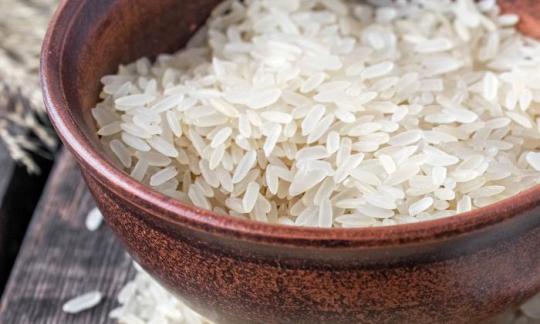

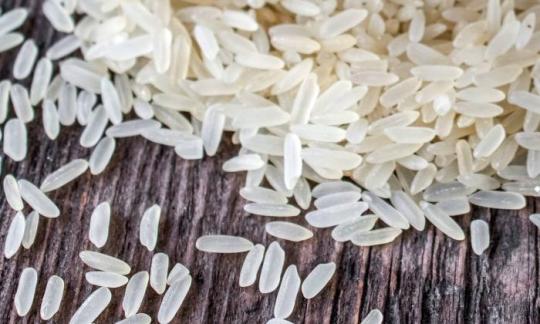

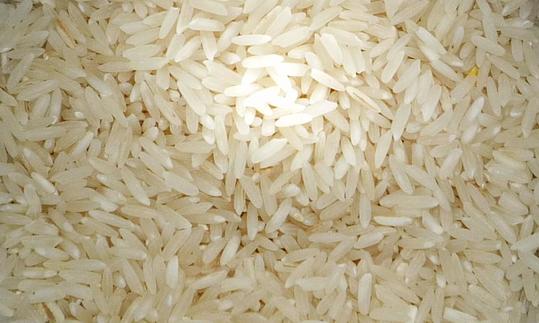

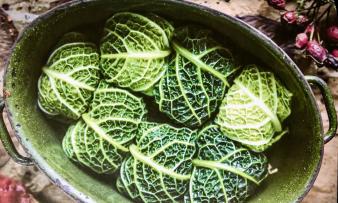
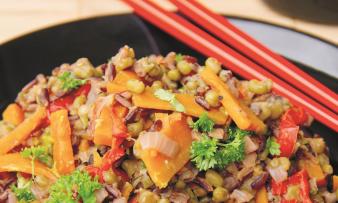
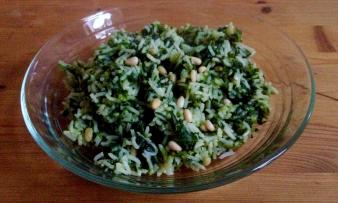





Comments